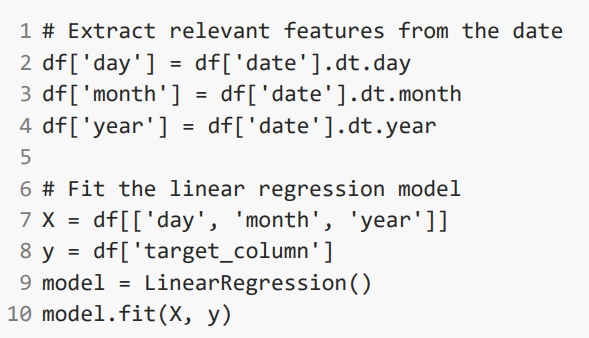How to Deal with Date and Timer Functions in Python?
Python Date and Time Functions - Check out practical examples and expert tips to enhance your skills in time handling for your Python projects. | ProjectPro
Have you tried to change data time or calculate some statistics from date time stamps? This tutorial will walk you through practical examples, share valuable tips, and help you understand how to integrate time-related features into your Python projects. So, let's get started!
Table of Contents
What are Python Date Functions?
Python provides a comprehensive set of date and time functions through its built-in datetime module. Date functions are essential for various applications, ranging from simple data manipulations to more complex tasks like handling time series data in machine learning.
Some standard Python date functions include:
-
datetime.now(): Retrieves the current date and time.
-
strptime(): Parses a string into a datetime object based on a specified format.
-
strftime(): Formats a datetime object into a string with a specified format.
-
timedelta(): Represents the difference between two dates or times.
Simple Example -

How do you Deal with Date functions in Python?
Dealing with date functions in Python involves various operations such as creating, formatting, parsing, and manipulating dates. The datetime module is crucial for these tasks. Developers can create datetime objects, convert them to strings, extract components like year or month, and perform arithmetic operations with timedelta.
Here's a basic overview of how to deal with date functions in Python, along with an example:



This example demonstrates creating datetime objects, formatting, and parsing date strings, performing arithmetic operations with timedelta, and checking the relationship between two dates.
How to Use Dates in Linear Regression in Python?
Linear regression often involves dealing with date-related data. Python's datetime module becomes invaluable in such scenarios. Check below the step-by-step guide on how to integrate dates into your linear regression models seamlessly-


How to Handle Date in Machine Learning?
In machine learning, handling dates involves incorporating them into models and dealing with various time-related challenges. Check out the key strategies below :-
-
Feature Engineering
Create new features from dates, such as day of the week, month, and year, to provide more context to your machine learning models.
-
Time-based Splits
Consider time-based splits when splitting your dataset into training and testing sets to ensure the model is evaluated on future data.
-
Handling Time Series Data
For time series data, use specialized libraries like Pandas and statsmodels for analysis, and consider models like ARIMA or Prophet for forecasting.
What are Python Timer Functions?
Python timer functions are crucial in executing tasks at specific intervals or after a certain delay. The time module in Python provides a simple and effective way to incorporate timers into your programs.

Example - Python Datetime Function
Step 1 - Import the library
from datetime import datetime
from datetime import timedelta
We have imported datetime and timedelta, which will be needed for the dataset.
Step 2 - Setting up the Data
We have used the current datetime for this snippet.
now = datetime.now()
print(now)
Step 3 - Dealing with Date Time
Here, we will be using different functions that we can use on date time.
-
Calculating Current Year
print(now.year)
-
Calculating current month
print(now.month)
-
Calculating current day
print(now.day)
-
Calculating current hour
print(now.hour)
-
Calculating current minute
print(now.minute)
-
Calculating difference between two days
delta = datetime(2011, 1, 7) - datetime(2011, 1, 6)
print(delta.days)
-
Calculating difference in seconds
print(delta.seconds)
-
Creating a datetime
start = datetime(2018, 1, 7)
-
Adding twelve days to the time
print(start + timedelta(12))
So the output comes as:
2020-10-16 01:50:34.441904
2020
10
16
1
50
1 day, 0:00:00
1
0
2018-01-19 00:00:00
Learn to use Python for Data Science with ProjectPro!
Mastering date and timer functions in Python is crucial for effective programming and data manipulation. This tutorial has equipped you with valuable insights and practical tips to understand these functionalities seamlessly. But here's the deal – to get the hang of it, you must practice. That's where ProjectPro comes to the rescue! With over 270+ projects, it's like a playground for coders. These real-world projects provide hands-on experience, allowing you to apply the knowledge gained from this guide. So, check out ProjectPro Repository to take your skills to the next level.
Download Materials

